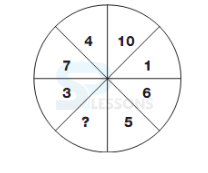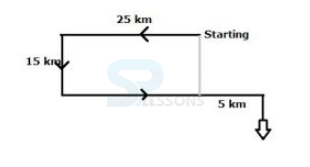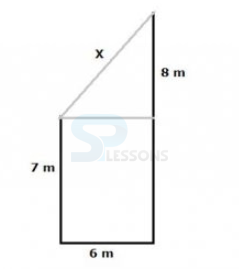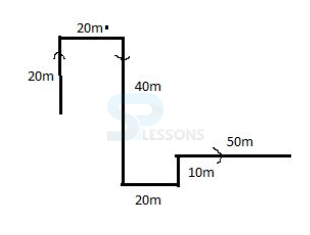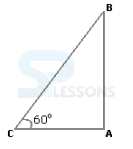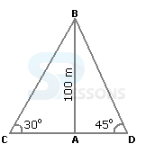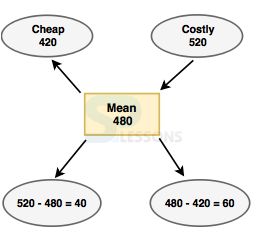 Introduction
Introduction
The article Nizamabad DCCB Study Guide, a preparation guide provides the sample question format of Telangana State DCCB exam. Nizamabad DCCB 2018 – Online Test/Examination, conducted in online Mode, has: a duration of 1 hour, a total of 100 questions, a maximum score of 100 marks, and consists of 3 sections, namely – English Language, Numerical Ability and Quantitative Aptitude/Numerical Ability. The 3 sections are separately timed and the questions can be attempted in any order.
 Pattern
Pattern
For: Assistant Manager
For: Staff Assistant
| Sl. No | Name of Tests (objective) | No. of questions | Max. Marks | Time allotted for each test (Separately timed) |
|---|---|---|---|---|
| 1 | Test of English language. | 30 | 30 | 20 Minutes |
| 2 | Test of Reasoning | 35 | 35 | 20 Minutes |
| 3 | Test of Quantitative Aptitude. | 35 | 35 | 20 Minutes |
| Total | 100 | 100 |
| Sl. No | Name of Tests (objective) | No. of questions | Max. Marks | Time allotted for each test (Separately timed) |
|---|---|---|---|---|
| 1 | Test of English language. | 30 | 30 | 20 Minutes |
| 2 | Test of Reasoning | 35 | 35 | 20 Minutes |
| 3 | Test of Numerical Ability. | 35 | 35 | 20 Minutes |
| Total | 100 | 100 |
Penalty for Wrong Answers:
There will be a penalty for wrong answers marked in the Objective Tests. For each question for which a wrong answer has been given by the candidate one fourth or 0.25 of the marks assigned to that question will be deducted as penalty to arrive at corrected score. If a question is left blank, i.e., no answer is marked by the candidate, there will be no penalty for that question.
 Syllabus
Syllabus
[Click Here] for detailed syllabus.
 Samples
Samples
Prepositions
1. I have a distate -------- publicity.
- A. about
B. at
C. against
D. for
- A. in
B. over
C. with
D. at
- A. Quebec was surrendered by the French to the English in 1759.
B. Quebec was surrendered to the English in 1759 by the French.
C. Quebec was surrendered in 1759 by the French to the English.
D. The English were surrendered Quebec in 1759 by the French.
- A. I was promised by my undo a present.
B. A present was promised by my uncle to me.
C. I was promised a present by my uncle.
D. I had been promised a present by my uncle.
- A. Only B
B. A and C
C. A and B
D. Only A
E. None of these
- A. A and C
B. B and C
C. A and B
D. Only A
E. All the three
- A. the war of Mahabharata
B. is the full length illustration
C. of a righteous war
D. no error
- A. it is a rainy day
B. we decided not to go out
C. but to stay at home
D. and watch a movie
E. no error
- A. Whirl
B. Fish
C. Hit
D. Mistake
- A. Difficult
B. Mysterious
C. Inflexible
D. Wary
- A. help to laugh at
B. laugh at
C. to laughing at
D. none
- A. a taller
B. taller
C. the taller
D. the tallest
- A. were taken out in
B. are taken out on
C. was taken out on
D. ware taken out on
E. No correction required
- A. cozy and warm enfolds you
B. cozy and warmth enfolds you
C. coziness and warmth enfolds you
D. coziness and warmth is enfolding you
E. No correction required
- A. A and B
B. Only B
C. Only A
D. B and C
E. A and C
- A. A and B
B. B and C
C. A and C
D. All the three
E. None of these
- A. incidence
B. perils
C. potentialities
D. redundancies
- A. guilty
B. arrogant
C. timid
D. ashamed
- A. A and B
B. B and E
C. A and E
D. C and D
E. A and D
- A. A and D
B. D and E
C. B and C
D. E and F
E. A and B
- A. he will see the house
B. the house has been seen
C. he saw the house
D. the house is seen
E. No correction required
- A. his complete diligence on work
B. the most complete diligence in work
C. his complete diligence on his work
D. complete diligence in his work
E. No correction required
- A. imagined
B. depict
C. shown
D. visualized
E. characterized
- A. Increase
B. variance
C. more
D. decrease
E. abundance
- A. egoist
B. client
C. credulous
D. faithful
- A. drover
B. oculist
C. philatelist
D. lapidist
- A. Worthy
B. successful
C. honest
D. honest means
- A. to divide
B. to discuss
C. to deliver
D. to measure
- A. encourage
B. intrigue
C. trigger
D. tarnish
E. embellish
- A. ill-fame
B. celebrity
C. nickname
D. fame
E. sobriquet
- A. PRQS
B. SPRQ
C. RQPS
D. QSPR
- A. QSRP
B. PSQR
C. PQRS
D. QPRS
Number Coding
1. In a certain code language, if INFER = 25 and JERSEY = 28, then CHOICE =?
- A. 34
B. 39
C. 41
D. 47
E. 49
- A. 76
B. 74
C. 64
D. 68
E. None of these
- A. 5000
B. 4700
C. 4800
D. 4000
- A. + and -
B. - and ÷
C. + and x
D. + and ÷
- A. 5 x 4 + 20 = 40
B. 5 x 4 + 20 = 85
C. 5 x 4 + 20 = 104
D. 5 x 4 + 20 = 95
- A. 6 - 8 ÷ 4 = - 1
B. 8 - 6 ÷ 4 = 1
C. 4 ÷ 8 - 2 = 6
D. 4 - 8 ÷ 6 = 2
- A. Son
B. Grandson
C. Brother
D. Grandfather
- A. Uncle
B. Father
C. Grandfather
D. Brother
E. Data inadequate
- A. N is the brother of B
B. N is the brother of D
C. M is the brother of B
D. D is the brother of M
E. None of these
- A. 8
B. 6
C. 4
D. 2
- A. 11
B. 15
C. 8
D. 7
- A. 56
B. 45
C. 39
D. 33
- A. Sister
B. Mother-in-Law
C. Mother
D. Step-mother
E. None of these
- A. 14
B. 16
C. 18
D. 24
E. None of these
- A. Rajan
B. Sachin
C. Manick
D. None of these
- A. 1
B. 2
C. 3
D. 4
E. 5
- A. 1
B. 2
C. 3
D. 4
E. 5
- A. 1
B. 2
C. 3
D. 4
E. 5
- A.West
B.East
C.South
D.North
E.None of these
- A.10m, southeast
B.10m, northeast
C.20m, northwest
D.20m, southwest
E.None of these
- A. east
B. west
C. north
D. south
E. None of these
- A. 3 + 2 > 4 < 9 + 3 < 2
B. 3 > 2 > 4 = 18 + 3 < 1
C. 3 > 2 < 4 x 8 + 4 < 2
D. 3 + 2 < 4 x 9 + 3 < 3
- A. 80
B. 25
C. 24
D. 5
- A. 7.95
B. 16
C. 44
D. 479.95
E. None of these
- A. Ice
B. Condense
C. Solid
D. Force
- A. Editor
B. Reader
C. Paper
D. Press
- A. Food
B. Laziness
C. Hunger
D. Race
- A. 14
B. 15
C. 21
D. 23
- A. 7
B. 10
C. 14
D. 15
- A. 9
B. 29
C. 32
D. 34
- A. Kunal
B. Rohan
C. Sachin
D. Data inadequate
E. None of these
- A. Only (i)
B. Only (ii)
C. Only (v)
D. Either (i) or (iv)
E. None of these
- A. Sachin
B. Kunal
C. Anuj
D. Rohan
E. None of these
- A. 33
B. 34
C. 35
D. 37
E. None of these
- A. 20th and 24th
B. 24th and 20th
C. 25th and 21st
D. 26th and 22nd
E. None of these
- A. 14th
B. 15th
C. 16th
D. 17th
- A. NEJJ
B. NNEJ
C. JENN
D. JENJ
- A. 40
B. 66
C. 80
D. 46
- A. MDOLD
B. MDPLD
C. NDOLD
D. MDOLE
- A 51
B 59
C 37
D 45
E None of these
- A –8
B 32
C 20
D 12
E None of these
- A 43
B 27
C 35
D 28
E None of these
Simple Interest
1. A sum of Rs. 2665 is lent into two parts so that the interest on the first part for 8 years at 3% per annum may be equal to the interest on the second part for 3 years at 5% per annum. Find the second sum?
- A. Rs.1678
B. Rs.1640
C. Rs.2341
D. None
- A. Rs.107.50
B. Rs.115.50
C. Rs.157.50
D. Rs.177.50
- A. Rs.575
B. Rs.675
C. Rs.585
D. Rs.685
- A. 2.3 m
B. 4.6 m
C. 7.8 m
D. 9.2 m
- A. 149 m
B. 156 m
C. 173 m
D. 200 m
- A. 173 m
B. 200 m
C. 273 m
D. 300 m
- A. 120 cm[latex]^ {2}[/latex]
B. 148 cm[latex]^ {2}[/latex]
C. 74 cm[latex]^ {2}[/latex]
D. 15 cm[latex]^ {2}[/latex]
- A. 450 m[latex]^ {3}[/latex]
B. 100 m[latex]^ {2}[/latex]
C. 60 m[latex]^ {3}[/latex]
D. 400 m[latex]^ {3}[/latex]
- A. 120 cm[latex]^ {3}[/latex]
B. 40 cm[latex]^ {3}[/latex]
C. 50 cm[latex]^ {3}[/latex]
D. 60 cm[latex]^ {3}[/latex]
- A. 150 m
B. 125 m
C. 130 m
D. 100 m
- A. 50
B. 40
C. 25
D. 15
- A. 1500
B. 1750
C. 9000
D. 7500
E. None of these
- A. 9
B. 3
C. 0.3
D. 0.03
E. None of these
- A. 50 kmph
B. 52 kmph
C. 54 kmph
D. 56 kmph
- A. 10 sec
B. 11 sec
C. 12 sec
D. 14 sec
- A. 20
B. 2000
C. 4000
D. 8000
- A. 16
B. 18
C. 24
D. 27
- A. 17[latex]^ {28 }[/latex]
B. 17[latex]^ {24 }[/latex]
C. 17[latex]^ {26 }[/latex]
D. 17[latex]^ {22 }[/latex]
E. None of these
- A. 3
B. 9
C. 81
D. 21
E. None of these
- A. 48 hours
B. 60 hours
C. 72 hours
D. 96 hours
- A. 14 hours
B. 19 hours
C. 28 hours
D. 95 hours
- A. Motorist = 8 km/hr ; Stream = 28 km/hr
B. Motorist = 10 km/hr ; Stream = 5 km/hr
C. Motorist = 14 km/hr ; Stream = 4 km/hr
D. Motorist = 28 km/hr ; Stream = 8 km/hr
- A. 4 km/hr ; 3 km/hr
B. 5 km/hr ; 1 km/hr
C. 6 km/hr ; 4 km/hr
D. 12 km/hr ; 6 km/hr
E. Cannot be determined
- A. 134
B. 150
C. 174
D. 226
- A. 36
B. 54
C. 72
D. 81
E. None of the above
- A. Rs. 50000
B. Rs. 66000
C. Rs. 72000
D. Rs. 78000
- A. 4 : 7 : 1
B. 5 : 8 : 12
C. 8 : 5 : 12
D. 12 : 5 : 8
- A. 8
B. 216
C. 576
D. 648
- A. 66
B. 506
C. 713
D. 961
- A. [latex]\frac {72}{225}[/latex]
B. [latex]\frac {36}{65}[/latex]
C. [latex]\frac {144}{5}[/latex]
D. [latex]\frac {288}{5}[/latex]
- A. 13
B. 17
C. 78
D. 89
- A. Rs. 960
B. Rs. 840
C. Rs. 1020
D. Rs. 760
- A. Rs. 480
B. Rs. 520
C. Rs. 600
D. Rs. 960
- A. 12 years
B. 16 years
C. 18 years
D. 24 years
- A. Rs. 735.5
B. Rs. 815
C. Rs. 825
D. Rs. 855
- A. 450 sq.m.
B. 700 sq.m.
C. 850 sq.m.
D. 900 sq.m.
- A. 1.69 m
B. 1.85 m
C. 1.96 m
D. 2.25 m
- A. 1530 m
B. 1680 m
C. 1750 m
D. 3600 m
- A. Amish = 10 days; Brijesh = 50 days
B. Amish = 15 days; Brijesh = 75 days
C. Amish = 20 days; Brijesh = 80 days
D. Amish = 20 days; Brijesh = 100 days
- A. 3 days
B. 6 days
C. 7.5 days
D. 8 days
- A. 2:3
B. 2:1
C. 1:3
D. 4:1
- A. 720 litres
B. 1000 litres
C. 1200 litres
D. 1320 litres
- A. 3.72 × 10[latex]^ {-6 }[/latex]
B. 3.72 × 10[latex]^ {-5}[/latex]
C. 3.72 × 10[latex]^ {-3}[/latex]
D. 3.72 × 10[latex]^ {-4}[/latex]
- A. 359.022
B. 362.02
C. 328.221
D. 348.231
- A. [latex]\frac {1}{108}[/latex]
B. [latex]\frac {1}{36}[/latex]
C. [latex]\frac {7}{36}[/latex]
D. 1
- A. [latex]\frac {9}{13}[/latex]
B. [latex]\frac {13}{30}[/latex]
C. [latex]\frac {17}{30}[/latex]
D. [latex]\frac {22}{30}[/latex]
- A. Rs. 40
B. Rs. 60
C. Rs. 90
D. Rs. 220
- A. 33.5
B. 34
C. 50
D. 67
- A. 60
B. 70
C. 80
D. 100
- A. 8000
B. 7000
C. 5000
D. 6000
- A. 132
B. 138
C. 141.2
D. 145.8
- A. 112225
B. 120225
C. 122225
D. 150225
- A. 12 years
B. 16 years
C. 24 years
D. 48 years
- A. 24 years
B. 36 years
C. 54 years
D. 144 years
 Best Books
Best Books
| Name of the Book | Name of the Author | Year of Publication | Book Price in Rs | Book Rating | Get Book |
|---|---|---|---|---|---|
| New Pattern English Language for SBI/ IBPS Bank PO/ SO/ Clerk/ RRB Exams (English, Paperback, Disha Experts) | Disha Experts | 2018 | RS.189/- | ----- | Flipkart |
| Bank PO English Language : 17 Years (2000 - 2016) Chapterwise Solved Papers (English, Paperback, Arihant Experts) | Arihant | 2018 | Rs.201/- | 4.3/5 | Flipkart |
| Bank PO English language Chapterwise Solved Papers - 1723 [Print Replica] Kindle Edition | Think Tank of Kiran Prakashan & KICX | 2018 | Rs.323/- | 3.0/5 | Amazon |
| Winning with English Language 2018 For Competitive Exams: For Banking, IBPS - PO and Clerical, UPSC, IAS, SSC, RAILWAYS, CTET, NDA, CDS, RRB and other (Asktenali Winning Series Book 104) Kindle Edition | Swaminathan Sankaran | 2018 | Rs.76/- | ----- | Amazon |
| Name of the Book | Name of the Author | Year of Publication | Book Price in Rs | Book Rating | Get Book |
|---|---|---|---|---|---|
| 14 Kiran’s Tricky Approach To Competitive Reasoning Verbal & Non Verbal (Fully Solved) 7000+objective Question Logical Reasoning & Analytical Ability—English (Paperback, Kiran) | Kiran | 2016 | RS.590/- | 3/5 | Flipkart |
| IBPS- CWE CLERK SPEED TESTS REASONING | BSC PUBLICATION | ----- | Rs.248/- | 3.6/5 | Flipkart |
| Topic-wise Solved Papers for IBPS/ SBI Bank PO/ Clerk Prelim & Mains (2010-16) Reasoning (English, Paperback, Disha Experts) | Disha Experts | 2017 | Rs.99/- | 4.1/5 | Flipkart |
| Reasoning for IBPS & All Other Examinations (English, Paperback, Sachchida Nand Jha) | Sachchida Nand Jha | 2014 | Rs.90/- | 3.5/5 | Flipkart |
| Reasoning Verbal, Non-Verbal & Analytical - for Competitive Examinations (Englsih, Paperback, Dipak Kumar Yugnirmal) | Dipak Kumar Yugnirmal | 2017 | Rs.400/- | ----- | Flipkart |
| Name of the Book | Name of the Author | Type of Book | Year of Publication | Book Price in Rs | Book Rating | Get Book |
|---|---|---|---|---|---|---|
| Quantitative Aptitude for All Competitive Examinations | Abhijit Guha | Prelims + Mains | 2016 | Rs.359/- | 3.5/5 | Amazon |
| Shortcuts in Quantitative Aptitude with 4 eBooks for Competitive Exams | Disha Experts | Prelims + Mains | 2016 | Rs.45/- | 3.1/5 | Amazon |
| Teach Yourself Quantitative Aptitude | Arun Sharma | Prelims + Mains | 2017 | Rs.259/- | 3.4/5 | Amazon |
| Quantitative Aptitude for competitive examination R S Agarwal 2017-2018 | R S Agarwal | Prelims + Mains | 2017 | Rs.694/- | ----- | Amazon |







